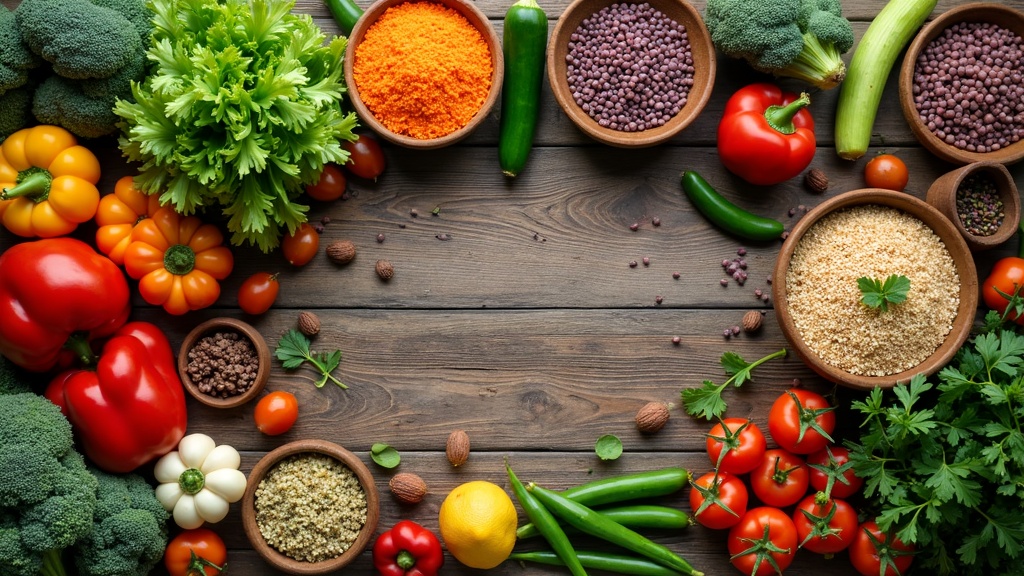Trying out plantbased challenges can be a fresh way to make your diet healthier, experiment with new foods, and join a likeminded community.
There are plenty of yearly challenges floating around, each with its own twist and perks.
If you’ve ever thought about making your meals more plantforward, whether for health, the planet, or just for fun, here’s what you should know about getting into and picking a plantbased challenge this year.

Why PlantBased Challenges Are Worth Trying
Switching up your daily routine to join a plantbased challenge isn’t just about cutting out animal products; it’s a way to shake up old habits, flex your cooking creativity, and take a closer look at what you’re eating.
Many people who try these challenges find that it helps them stumble upon new dishes, eat more varied veggies, and understand more about nutrition as a whole.
The popularity of plantbased eating has been growing.
Studies show that plantforward diets can support heart health, lower your carbon footprint, and sometimes even save money on groceries.
Plus, when you get involved in a challenge, you usually get support and inspiration from others doing the same thing.
That community can make all the difference when your motivation dips or you’re just stumped for dinner ideas.
Most plantbased challenges describe themselves as welcoming to everyone, no matter how much (or little) experience you have with plantforward eating.
It’s not all or nothing.
Even taking a 7day challenge can show you new favorite foods and habits.
Popular PlantBased Challenges To Try
There are a bunch of different plantbased challenges out there, and each one brings its own style and set of rules.
Here are a few you might want to check out if you’re looking to pick one that fits your lifestyle and goals:
- Veganuary: The original January challenge encouraging people to go vegan for one month. It offers loads of community support, recipes, and daily emails.
- Meatless Mondays: This weekly challenge is simple—skip meat one day each week. It’s super beginnerfriendly and gradual, so you can start small and build up as you go.
- 21Day PlantBased Kickstart: Run by the Physicians Committee for Responsible Medicine, this guided 3week plan is designed to help people move to a fully plantbased diet, complete with shopping lists and recipes.
- Seasonal PlantBased Months: Monthlong events (like National Vegetarian Month or World Plant Milk Day) often include recipes, live cooking demos, and challenges tailored to a specific time of year.
- 30Day Whole Food PlantBased Challenge: A month spent avoiding processed foods and eating only whole plants. This one encourages participants to focus on wholesome, minimally processed meals.
Finding the right challenge depends on your schedule, your current eating habits, and what kind of results you’re hoping to see.
Smaller, shorter challenges can be a nice introduction, while monthlong efforts work if you’re looking for a bigger lifestyle reset.
Getting Ready: What To Expect In A PlantBased Challenge
Jumping into a plantbased challenge can feel like a big mixup, but a little planning makes everything less overwhelming.
Most challenges come with meal plans, checklists, shopping lists, or even daily emails to help you stay on track.
Here are some changes you’ll probably spot during your first round:
- More Time in the Kitchen: You might cook more from scratch than usual and try out new recipes, sauces, or methods.
- Ingredient Swaps: Instead of cheese, you could try cashewbased alternatives. Instead of ground beef, lentils, tofu, or mushrooms do the trick.
- Hunting for Hidden Animal Products: It’s not just obvious things like meat; sometimes, it’s about reading labels for sneaky ingredients like whey, gelatin, or honey.
- Food Discovery: You’ll probably stumble upon new favorites, from chickpea omelets to dairyfree ice cream and savory grain salads.
You might notice some changes in your energy levels, digestion, or even your cravings in the first few days.
That’s totally normal as your body gets used to new foods and more fiber.
Drinking more water helps smooth the transition.
My Quick Guide for Starting a PlantBased Challenge
If you want to hit the ground running with a plantbased challenge, these steps will help you feel prepared without getting overwhelmed:
- Pick a Manageable Challenge: Don’t stress about going 100 percent plantbased overnight. Try something like Meatless Monday, or commit to just breakfasts and lunches for your first attempt.
- Clear Out (or Use Up) NonPlant Foods: Make space in your pantry and fridge for beans, grains, nuts, and veggies. Use up or donate what doesn’t fit the challenge.
- Plan Your Meals: Write out a simple plan for breakfasts, lunches, dinners, and snacks. Batch cook some basics like grains or roasted veggies to make things easy later on.
- Shop Smart: Stick to the outer aisles at the store; think produce, whole grains, and beans. Pick up a few plantbased treats or pantry staples you’ve never tried before for some excitement.
- Track Your Progress: Take note of new recipes you love, how you’re feeling, and what’s working. A simple journal or calendar keeps you motivated and aware of your growth.
Simple steps like these can set you up for a positive experience, especially if plantbased eating is new for you.
Common Challenges and How to Tackle Them
Switching to a plantbased routine comes with a few small bumps, but there are easy fixes:
- Missing Old Favorites: Craving cheesy pizza or ice cream happens. Try plantbased versions or DIY your own (cashew cheese or banana “nice” cream can be surprisingly good).
- Dining Out: Restaurants have made progress, but menus can still be limited sometimes. Don’t be shy about asking for custom plantbased options, or check menus ahead of time for peace of mind.
- Hidden Animal Ingredients: Stay sharp with product labels and look for vegan certification logos. Apps like HappyCow or CodeCheck help when you’re out shopping or traveling.
- Worried About Protein or Iron: Beans, lentils, tofu, and whole grains easily meet your protein needs. Pair ironrich foods with vitamin C from peppers or oranges to bump up absorption.
- Criticism or Curiosity: Friends and family may have questions or doubts. Share what you love about your meals, and who knows—you might get someone else interested.
Missing Old Favorites
If you’re craving your go-to meals, spend some time finding plantbased swaps that you really like.
Not every alternative cheese or ice cream will hit the spot right away, so experiment with new brands or recipes and let yourself enjoy the adventure.
Dining Out
Don’t get discouraged if plantbased options seem limited.
Many global cuisines like Mexican, Thai, Indian, and Mediterranean have options that are already plantbased or can be modified.
Checking online menus before going out helps set expectations.
Getting Enough Nutrients
There’s a common myth that plantbased diets are low in protein.
Lentils, chickpeas, tofu, nuts, seeds, and whole grains all pack plenty of protein.
If you’re wondering about nutrients like B12, consider a supplement — as most challenges will explain, B12 isn’t found in plants naturally.
Most people on plantbased challenges say these hurdles become a lot easier to get over with a little practice and support from guides, apps, and online groups.
Advanced Tips for a Successful PlantBased Challenge
Once you’re past the basics, you can make your plantbased challenge even more fun by taking your kitchen game up a notch:
Cook Big Batches:
Double up on soups, grain bowls, or curries.
Leftovers save you time and effort in the middle of a busy week or challenging day.
Explore International Recipes:
Trying plantbased meals from different cultures opens up flavors and techniques that keep things exciting.
Mediterranean, Indian, Thai, and Ethiopian cuisines are packed with ideas.
Join Online Groups:
Community support is powerful.
Facebook groups, Reddit forums, and Instagram hashtags are bursting with tips, recipes, and encouragement from folks going through the same challenge.
Get Creative with Snacks:
Homemade seed bars, roasted chickpeas, or energy balls keep your energy up between meals and prevent boredom.
Read Ingredient Lists:
Watch out for animal products hiding in everyday items like crackers, soups, and sauces.
Giving ingredient lists a onceover at the store saves surprises later.
If you have a rough patch (or a meal that doesn’t quite work), remember that every plantbased meal counts toward your goal.
Just carry on with your next meal and keep going—perfection isn’t required.
RealWorld Benefits of Joining PlantBased Challenges
These challenges aren’t just about eating more greens.
They can help you reach personal health goals, reduce your environmental impact, and encourage mindful eating.
A plantbased challenge also sharpens your kitchen skills, helps track down affordable ways to eat well, and introduces you to new supportive communities.
- Building Healthy Habits: Eating more fruits, veggies, and legumes turns into a routine after a few weeks.
- Expanding Your Palate: Stumbling upon new flavors and textures keeps things interesting in your kitchen.
- Making Positive Change: A lot of people feel great about lowering their carbon footprint and cutting back on packaging waste by going plantbased for a while.
Frequently Asked Questions
Question: How strict are plantbased challenges?
Answer:
Most are very flexible.
If you go off course, just pick up again with your next meal.
The goal is to do your best, not be perfect.
Question: What if I don’t like cooking?
Answer:
A lot of challenges include super simple, minimalcooking recipes and meal prep guides.
Precut veggies and frozen grains help, too!
Question: Can I still do this if I have allergies?
Answer:
Absolutely; just swap out any ingredients that don’t work for you.
If your allergies are severe, give product labels a solid lookover before eating.
Give PlantBased Challenges a Try
Jumping into a plantbased challenge this year is a solid way to stumble upon new foods, build healthy habits, and discover what plantbased eating can offer you.
There’s a style and pace for everyone.
You’ll probably be surprised by how doable and tasty it is once you get started.
Why not let plantbased eating add something fresh to your adventure this year?
